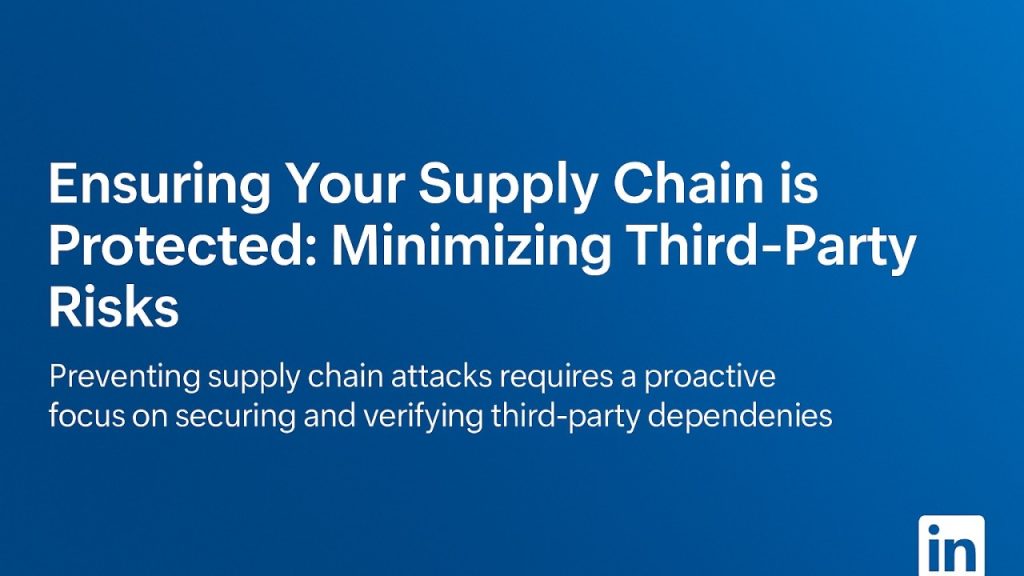🚨 When Your Code Supply Chain Becomes a Threat: Lessons from the Recent JavaScript Package Breach

US Service Center
September 8, 2025
By Andre Leroux | CEO | Risk Mitigation & Security Advocate
This week, the cybersecurity world was shaken by a targeted attack on the open-source ecosystem. At least 18 widely-used JavaScript packages, downloaded over 2 billion times weekly, were compromised after a developer was phished. The attackers injected malicious code designed to steal cryptocurrency, and while the breach was quickly contained, it exposed a critical vulnerability in modern software development: the fragility of our digital supply chains.
As someone deeply involved in helping organizations safeguard security and reduce risk factors, this incident is a stark reminder that your security is only as strong as the weakest link in your supply chain.
🔍 What Happened?
A developer with access to multiple popular packages was tricked via phishing, allowing attackers to inject malicious code into trusted libraries. These packages were then automatically pulled into countless applications and services, potentially exposing users to theft and exploitation.
While this attack was narrowly focused on crypto theft, imagine if the payload had been ransomware, data exfiltration, or infrastructure sabotage. The consequences could have been catastrophic.
🧩 The Supply Chain Blind Spot
Most organizations today rely heavily on third-party code, vendors, and service providers. Open-source packages, cloud APIs, and SaaS integrations are the backbone of innovation—but they also introduce hidden dependencies and risks.
Here’s the reality:
- You may trust your codebase, but do you trust every contributor to every package you use?
- You may vet your vendors, but do you vet their vendors?
- You may secure your perimeter, but what about the software updates flowing in daily?
✅ What Can Be Done?
To minimize risk factors and protect your organization, here are five critical steps every security-conscious leader should consider:
- Implement Software Bill of Materials (SBOM): Know exactly what’s in your code. Track dependencies and sub-dependencies to identify vulnerabilities quickly.
- Verify Third-Party Integrity: Use tools that scan and validate third-party packages before deployment. Consider only using packages with active maintenance and strong community oversight.
- Enforce Multi-Factor Authentication (MFA) for Developers: The breach began with a phished developer. MFA and credential hygiene are non-negotiable.
- Monitor for Anomalies in Package Behavior: Behavioral analysis can detect when a package starts doing something it shouldn’t—like making outbound calls or accessing wallets.
- Establish Incident Response Protocols for Supply Chain Breaches: Be ready to isolate, patch, and communicate quickly when a third-party component is compromised.
🛡️ How US Service Center Can Help
At US Service Center, we specialize in helping organizations build resilient, secure ecosystems by:
- Auditing and verifying third-party software and vendor relationships
- Implementing SBOM frameworks and supply chain visibility tools
- Training teams on phishing resistance and credential hygiene
- Designing incident response plans tailored to supply chain threats
- Providing ongoing risk assessments and compliance support
Whether you’re a tech startup, a financial institution, or a government contractor, our mission is to reduce your exposure and strengthen your defenses—before a breach occurs.
🔐 Security Is a Shared Responsibility
This incident is a wake-up call. Whether you’re a startup or an enterprise, you must treat your supply chain as part of your security perimeter. That means verifying, monitoring, and holding third parties to the same standards you apply internally.
If you’re not already auditing your supply chain and third-party integrations, now is the time. US Service Center is here to help.
💬 Let’s Talk
Have you reviewed your software supply chain recently? What steps are you taking to ensure your third-party dependencies aren’t your biggest risk?
Drop a comment or reach out—let’s build a safer digital ecosystem together.
